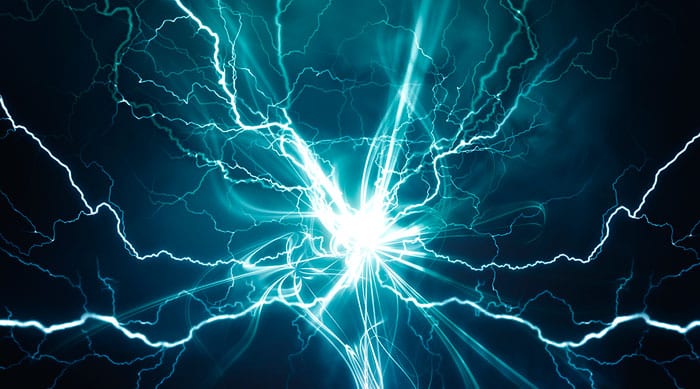AI could halve the number of power cuts
Artificial intelligence (AI) could help predict and prevent power cuts before they happen, potentially helping to halve the number of outages.
27th September 2018 by Networks

New technology being developed by UK Power Networks and Scottish and Southern Electricity Networks (SSEN) will see AI and ‘big data’ used to improve network reliability.
The innovative project called ‘Synaps’ will enable engineers to use a library of ‘big data’ drawn from the network, in conjunction with artificial intelligence, to predict and locate a potential fault on network equipment before it occurs.
The technology works by analysing the waveforms of the electricity voltage 100,000 times per second, and identifying when anything slightly unusual is happening in the cables. UK Power Networks is working with Powerline Technologies, who have developed a solution that will build up a library of all the measurements the technology makes.
Artificial intelligence then compares each new measurement to the vast library of data to spot any trends, patterns or irregularities. Over time, the machine will build up its knowledge and ‘learn’ to recognise conditions that can cause a fault on the electricity network.
Rona Mitchell, innovation engineer at UK Power Networks said: “There is a lot of talk about artificial intelligence and machine learning, but this is an example of it being put to a really practical use, in a way that’s going to benefit our customers by helping us to run an even more reliable network at lower cost.”
Kevin Dennis, innovation project manager at SSEN, added: “We are delighted to work in collaboration with UK Power Networks, the Energy Innovation Centre and Power Line Technologies to develop and trial an innovative solution to help us identify faults on our network and improve the service we provide to our 3.8 million customers. Ofgem’s innovation funding provides us with the opportunity to work together to trial artificial intelligence for the benefit of the wider industry and the customers we serve.”
Brian Lasslett, CEO at Powerline Technologies, said “The introduction of the Synaps innovative machine learning will enable distribution network operators to proactively manage their networks through preventative maintenance to repair faults before a hard failure, implementing real time network monitoring to minimise impact of faults on customers.”
If successful, the trial could enable a product to be developed that could cut the number of faults on low voltage networks by half. The device is set to be trialled on UK Power Networks and SSEN’s networks in 2019 and, if successful, could be installed across electricity networks from 2020.
The £680,000, 14-month project is being run jointly by the companies, and is funded by the regulator Ofgem’s Network Innovation Allowance.
Comments
Login on register to comment
Related content

Power
The future for vegetation management
Why networks should focus on data not trees to overcome the costly challenges involved in vegetation management

Power
An unprecedented opportunity for change
Why short interruptions will matter in RIIO-ED2 and how to address them.

Power
Time for less talk and more action on decarbonisation
Core "oven-ready" solutions to decarbonising heat and transport exist today and should be implemented without delay, says WPD's future power networks expert.
Related supplier content
![‘Learning by doing’ on the road to net zero [test product]](https://networksonline.s3.amazonaws.com/products/images/3.jpg)
People & Skills
‘Learning by doing’ on the road to net zero [test product]
DSO director Andrew Roper discusses 'Learning by doing'

Power
Load patterns and lockdown: how Covid-19 is impacting electricity networks
Insights into dynamics on the low voltage network as the outbreak unfolds

Downloads
Protect electrical equipment from insulation failure
Insulation faults are a major cause leading to the eventual failure of electrical equipment. Partial discharge (PD) is a very reliable indicator of developing insulation faults. Regular PD testing allows users to detect and analyze PD activity